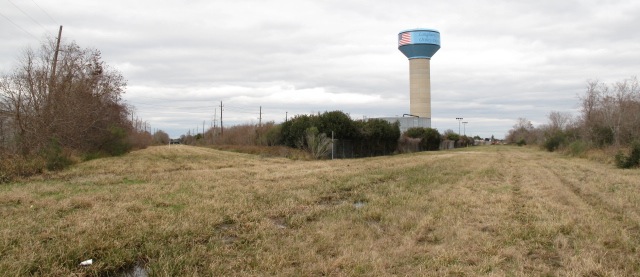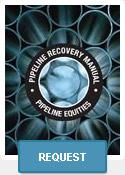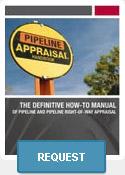Pipeline Equities
PO Box 571977
Houston, Texas 77257
Phone: 713-623-0690
Pipeline Recovery
excavation & removal
Damage Assessment
of easements
Pipeline Appraisal
pipeline property valuation
Pipeline Equities
PO Box 571977
Houston, Texas 77257
Phone: 713-623-0690
excavation & removal
of easements
pipeline property valuation

Pipeline Broker: a buyer and seller of pipelines, one who acts as a middle man between a buyer and a seller of pipelines, an commissioned agent in a transaction representing a buyer or a seller of a pipeline.
We don’t have auctions or central selling or buying exchanges for pipelines as exists for oil and gas properties, pipe, drilling and production equipment. There just aren’t enough transactions taking place to warrant a market. The business has always centered around a Pipeliner selling out to producers they transport for or transactions between other pipeline operators in the vicinity. More often than not, a pipeline that is unprofitable, marginal or on the decline as far as throughput is just mothballed. However, in this day of hedge funds and private equity money in abundance, the old rules don’t apply any more. There are operators, wannabe operators, and former operators of pipelines buying up abandoned or out of use pipelines like the boom of the nineteen twenties and Spindletop were just beginning. The reason is the shale plays and other unconventional gas, oil and CO2 activities.
Suddenly, any pipe in the ground anywhere near the Hayneville, Eagle Ford, Marcellus, Barnett or any others yet to be found and horizontally drilled or tested with new technologies is in play. In this regard, my office acting as a pipeline broker and because we are active in various pipeline transactions, gets at least a call a week from buyers looking for pipelines to buy. They want trunk lines, gathering lines, or maybe just right of way easements. In another time, they were after conventional gas, but now anything near a shale play is sufficient. Once we put together 200 miles of pipe that as the crow flies went only 120 miles. This was a transmission line of sorts, not a gathering system.
I don’t know if “broker” is well received or not, but the business of buying and selling, brokering or being the middleman in a situation where a seller wants to find a buyer is useful and needed in a market that is “thin”or lacking in transactions. Often a brokerage contract in my office starts with an appraisal and when the owner sees an unexpected higher value, he asks if he can get that much on a sale. Our office generates a lot of pipeline appraisals and our methods-sometimes unconventional can produce surprising results.
About twenty years ago, our company received a routine call from a Dun and Bradstreet caller who was updating the credit files of Pipeline Equities. In the course of the conversation, she asked the usual questions about sales, revenues, employees, own or rent, etc. and finally she asked exactly the nature of my business and I replied that I was a pipeline broker. She was unable to find a standard industrial classification number or code for pipeline broker and she inquired if this category had to do with securities (being a broker) and I replied that it did not, but I bought and sold pipelines of the oil and gas sort. Unable to place my category in a slot that already existed, the caller determined to create a new category. That is how Pipeline Equities became the only pipeline broker in the Dun and Bradstreet database. Now having such a lofty title in such an organization as D & B, we needed to live up to that name and decided to adopt and legitimize the title.
Our company had always used direct mail as a primary marketing means of getting the word out on our endeavors that we were involved in and so we began talking about buying and selling pipelines. Our company really was the only pipeline broker in the Dun and Bradstreet database and after a time received calls inquiring about one pipeline or another. The fact is that we did know a lot about pipelines and where they were and if they were active or not because it was our business as a pipeline salvage operators. To add on the title of Pipeline Broker or one who acted as an agent or bought and sold pipelines was a natural move, so a job, diversification, and a division was created, but the changes continue. This year, we stopped using direct mail as a marketing means and switched primarily to email database marketing using various marketing techniques to draw potential clientele to our website where you can learn almost anything you want to know about our business in the privacy of your office with no Q and A from me or our agents. Yesterday’s handshake is today/s email.
In the years since that creation, I have acted as agent or broker in many pipeline transactions. Oftentimes these transactions have occurred because of my association with the salvaging of idled or abandoned pipelines. I bought a pipeline for salvage which had been out of use, but found a use before demolition. The use was not the intended use, but maybe something totally different so as switching a gas pipeline over to become a conduit for fiber optic cable. In another case we converted a crude pipeline to a electricity conduit and ran a 3/8″ cable from a electricity producing wind turbine to the national grid. That was extraordinarily more economical than running aerial cables in the conventional manner from one point to another.
Now twenty three years later, we have developed a database of transactions of pipelines that have sold or been bought that we may or may not have been involved in. Nevertheless it is a superb collection of data that helps greatly in the transactions of finding pipelines to buy or sell. This proprietary database also makes the difference in determining value for our appraisals when ever we are using a comparison approach to finding value in a pipeline system.
Sample Map:
Crude oil and product pipelines in an Oklamoma county circa 1985
Click on map to enlarge
Recently, we assisted a city government convert an abandoned crude oil line of eighty years of age to a transport system to carry treated waste water to irrigation sites along the corridor. This simple transaction saved the city millions of dollars in taxpayer moneys not spent on a new and needed system.
Our company was called to salvage a jet fuel line that ran twenty miles through a major metropolitan area. The project looked to be marginally profitable, but it existed in a highly congested area in a major metropolitan area. Before demolition, I made one phone call to a company that provided natural gas to this city. It turned out the jet fuel line ran beside their main line and would work perfectly as a back up manifold to their local distribution system. The acquiring company saved millions by finding a back up system they did not have to build, the sellers got rid of an asset or liability that was an irritant and the broker made a nice fee by finding a buyer for a property that had been considered junk or at the very minimum, a liability. The pipeline was recycled and might serve that city and that company another twenty or thirty years.
A large independent pipeline company called to asked our company to purchase a non operating pipeline that was well known and showed up on most industry maps. They simply did not want to purchase the line thus revealing their intent. Instead, a pipeline broker acted as agent for the company and was able to purchase the line at a below market price. The customer bought the line at less money than they would have paid and the brokering company made a good commission.
A great need in the oil and gas pipeline industry is for trained personnel in the asset management sector. The International Right of Way Association is one that certifies and educates in this area, but they are one of the only organizations that do so. They have extensive certification programs in asset management, acquisition of assets ( mostly right of way) and negotiation skills. There just does not seem to be that many larger companies that understand the value of silent and underused assets such as idled pipelines and gathering systems. We are finding more and more uses for them on a regular basis. Apprenticeship programs seem to be a thing of the past with oil, gas and pipeline companies. Instead, employees are hired in the form of “contract labor” or through contract agencies who provide the manpower, expertise and services that currently are keeping the industry operating. When the pipeline company is satisfied with the expertise, work ethic and experience of the contract personnel, they then hire that person which reduces their risk of hiring the wrong person. An inherent problem exists for the pipeline company in that they have at that point hired an entrepreneur that is not necessarily loyal as a hire fresh out of college and trained in that companies ways might have been. But then, is there any “brand loyalty” of any kind left anyway?
In this era of consolidation, companies are being bought or sold and assets are being pruned and discarded. Often when an acquiring company obtains another, it is for a particular line of business or a central group of assets that fits well with the purchaser’s current structure. The remaining inventory is left behind and in many cases forgotten or turned over to a business development manager who has other fish to fry that he understands a lot more. I don’t really use the term pipeline broker much, I just say that I buy and sell pipelines. And that is what I do, sometimes for salvage and sometimes for conversion to another use, but I still am only serving as the middleman and hopefully satisfying a need on both sides of the transaction.
On the other hand, new entrepreneurs are becoming frustrated everyday with major company ways and are finding capital and forming new ventures. Fifteen or twenty years ago, who ever heard of Chesapeake, Kinder Morgan, Genesis, or Enron for that matter. Each downturn or government boondoggle sets in motion another round of changes and opportunities for the next group of visionaries to take advantage of.
Our organization has sometimes been engaged by various engineering companies hired to test the integrity of a pipeline to be bought. We have been engaged as part of the team due to economic evaluations that were were necessary. At the end of the projects, we have been given the opportunity to purchase undesired portions of the systems or act as brokers to dispose of the remains.
In other situations, we were employed to appraise lines as the acquiring company selected from “packages” what they wanted and did not want according to what fit into their scheme of operations. These packages that become available from majors often have one or two good systems and more often that not also contain a system or three that might be considered substandard or a liability at best. Hollywood calls them “A” movies and “B” movies or we’ll sell you one Titanic, but you must take a Tom Mix and a Laurel and Hardy as well. We economically evaluate the good over the bad and then try to find a secondary use for the less desired lines such as use for fiber optic cable, electric conduit, water lines, and so on. Many times, a vintage pipeline that might seems substandard can be brought up to date using interior liner techniques.
In the nineteen fifties, I was roughnecking as a derrick hand on a rig owned by my dad, Sherrod Howell. He drilled ten wells head up and set pipe on ten great gas wells. Problem was, he was looking for an oil column and never found it. There was a lot of gas, however and on the horizon was Oscar Wyatt and Coastal States Gathering System. He was the visionary of his time and bought the gas for $.10 MCF. My dad was glad to get it as that was the only game in town. Both were visionary wildcatters; Howell going a little deeper in out of the way places and Wyatt laying lines where no lines had been laid before.
The shale plays are interesting. I have seen many a grown man cry on looking at an electric log at 3 A. M. to find only “shale gas”. That shale gas and the rich condensate we find today can be accessed by fracturing techniques not available in the nineteen fifties and sixties. And then we find out the Eagle Ford Shale is the formation that has fed the great East Texas Oil Field that started the era of the oil and gas wildcatters. Back to you Spindletop.

Fill out the short form below to receive our Pipeline Recovery Manual.
Sign up for our free newsletter to receive your complimentary copy of our Pipeline Recovery Manual that explains our entire process for recovering or salvaging idled or abandoned pipelines.
You will see how we deal with landowners regarding notification and recordings. How to draft a contract of sale with models by: Exxon, Texaco, Koch and others and pictures showing actual work in process.
The manual shows Pipeline Equities job references, right of way releases, agreements and the history and background of Pipeline Equities and managing partner David Howell. These references touch on parts of the six million feet of line removed or handled by the company over the past twenty years.
A line pipe table describing various weights, grades, and pressure ratings of ERW and seamless line pipe is included. This section is an indispensable tool for anyone doing operational word with line pipe.
Also included are extensive glossaries of pipe, pipeline, and right of way terms.

Request a complimentary Pipeline Appraisal Handbook
Fill out this short form and you will be sent a confirmation link to our Newsletter. Once you click the link you will be subscribed to our newsletter and taken to a page where you can download the Pipeline Appraisal Handbook.
This handbook written by David Howell, managing partner of Pipeline Equities is the basic text of any pipeline valuation. All of the essential factors for establishing the value of a pipeline are discussed along with exclusive proprietary formulas and tables essential to a certified appraisal.
Also included are 32 pages of pipe weight and grades tables that cover virtually any situation which might be encountered regarding line pipe requirements. Additionally you’ll find an extensive glossary of pipe, pipeline and right of way terminology is part of the Handbook.
Subjects include: Replacement, Right of Way, Surface Inventory, Throughput, Salvage/Recovery, and comparable sales histories to name a few of the basic factors of pipeline appraisal.
The author recognized a need for a report or “how to” manual for properly appraising pipelines and pipeline right of ways. Currently the work is being done by accounting firms, engineers, and real estate appraisers.
Howell has forty-five years experience in many sectors of the petroleum industry from drilling contractor and oil and gas operator to pipe and supply distribution throughout the world. He has published Tradex Equipment magazine, the Whole World Oil Directory, and the Texas Oil Register.
For the past twenty years, Howell has been almost exclusively engaged in pipeline sales and acquisition, appraisal, removal for salvage, environmental remediation and general pipeline operations.
Howell currently serves on board of the Pipeline Appraisal Institute and is a member of the International Right of Way Association. Howell is a graduate of Texas A&M University – Kingsville and a native of Alice, Texas. He is currently residing in Houston and is the managing partner of Pipeline Equities.